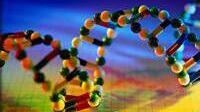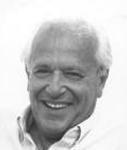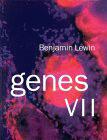| Online Courses and Texts
|


Genetics at Kimball's Biology Includes crossing over and genetic recombination in meiosis, gene mapping with three-point crosses, Mendel's monohybrid crosses, one gene--one enzyme theory, transposons: jumping genes.
Molecular Biology and Evolution : A large archive (mostly technical papers) from 18 years of Journal.
Beginner's Guide to Molecular Biology : Students will find this site useful. Teachers might find the information covers some of the course material for the national curriculum (UK) A level and gcses.


Introduction to Genetics : Covers heredity, historical perspectives, the Monk and his peas, mutations, and terminology. Be sure to see the following pages on DNA and genetics from the website's Main Menu.


DNA and RNA at Kimball's Biology : Includes recombination, repair and replication, base pairing, gene expression and therapy, gentic code, genome sizes, mutations, restriction enzymes, transcription and more.
Nucleic Acids : DNA is composed of two nucleotide chains connected to each other by hydrogen bonds. From a well-illustrated online textbook covering cell biology.
|
| Comparing Neanderthal with Us
|
|
Analysis of Neanderthal DNA from the Northern Caucasus
Original Research Article published in Nature and a review article regarding it: Ancient DNA: Neanderthal Population Genetics. Also a less technical article Genetic Study Revises Human Family Tree.
|
|
Genetic Theory and Methods
|
|
The Zuker Lab: All About RNA :
Algorithms, Thermodynamics and databases for RNA Secondary Structure.
MendelWeb : A resource for teachers and students interested in the origins of classical genetics, introductory data analysis, elementary plant science, and the history and literature of science.
Human Genetics :
Mutations are changes in genetic information stored in cells. Various agents can cause mutations, for example radiation, viruses, and certain chemicals we come into contact with. But mutations are not just the result of damaging influences coming from outside the cells - some are the result of errors made within cells when they make copies of genetic information before cell division.
TIGR Introduces Vibrio cholerae Genome :
Vibrio cholerae: base pairs: 4,033,460, protein-encoding genes: 3,885
This isn't the first bacterium known to have a second chromosome by any means, but it is the first where the evidence is overwhelming that [the second chromosome] may have come from somewhere else.
Evolution: Selected Papares and Commentary : This is a nice collection of papers, going back to Darwin, that traces the advances from early hyptheses about genetic material to modern knowledge.
Epigenetics: For decades genetic mutations and recombinations have driven most descriptions of how traits are handed down from one generation to another. Discoveries in epigenetics -- heritable changes in gene function that occur without a change in the DNA sequence -- are changing the way researchers think about heredity.
Closer Look at the Genome’s Black Holes : Understanding the basis of the sterility of cross-species breeding has been a problem in evolution ever since Darwin. Rapidly evolving centromeric DNA, histones and their incompatibility with their counterparts in another species might account for this phenomenon.
|
|
Human Medical Genetics
|
|
The Gene Letter by GeneSage : Genetics News and Information
GeneSage Helps Physicians Answer Genomics Questions
GeneClinics :
A clinical information resource relating genetic testing to the diagnosis, management, and genetic counseling of individuals and families with specific inherited disorders.
Want to Donate Your DNA? : This commercial Web site is soliciting volunteers to submit blood for genetic disease research and offers lots of information about DNA and research programs.
|
|
|
Course of Study Outlines
|

Daughters of Eve
DNA From the Beginning
DNA words are three letters long. Tutorial from Cold Spring Harbor Labs.
DNA Structure :
This tutorial requires Chime 1.0 software [download here].
|
|
The Human Genome
|

Nature Genome Information : Library on genomics research by journal Nature.
Human Genome Project
The Federal initiative.
Human Genome Central : From the Int'l. Sequencing Consortium. Here are good URLs for working with the data.
Human Family Tree: 10 Adams, 18 Eves
The human genome is turning out to be a rich new archive for historians and prehistorians, one whose range extends from recent times to the dawn of human existence. [NY Times 2-May-2000]
Seven Major European Families
Daughters of Eve [21-Apr-2000]
|
|
Recombinant DNA
|
Recombinant DNA Chapter Directory
How the process works. From M.I.T.
Recombinant DNA Problem Set
From the Univ. of Arizona
Recombinant DNA Research Protocols
Bruce A. Roe, Univ. of Oklahoma
|
|
Databases
|
|
Molecular Sequence Analysis
Molecular, nucleotide and protein data-bases, genetic and amino acid codes, and a wealth of references.
Genomes OnLine Database
Comprehensive access to information regarding complete, ongoing genome projects around the world.
Genes in Locus Specific Databases
Mutation Databases and Related Sites. Each Mutation is linked to specific webpages. Extensive body of data.
Genome Channel :
Genomic Information on many organisms from many sources.
Animal Genome Size Database
You can look up chromosome numbers and size (in haploid C-values) for over 2900 vertebrates and invertebrates.
|
|
| Genetics Related to Human Organs
|
|
Ovarian Kaleidoscope Database : Ovarian activation. The ovaries call on scads of genes to help with their hormone-producing and egg-releasing chores. Information about these genes is scattered throughout online gene and protein databases and scientific publications. The Ovarian Kaleidoscope Database aims to gather all this information in a searchable format.
Globin Gene Server home page :
On their Globin Gene Server, Penn State biochemist Ross Hardison, computer scientist Webb Miller, and collaborators are converting two books of the 1000-some known human globin mutations into databases. The Penn State team also recently unveiled a Web tool called PipMaker for comparing DNA sequences. "One of the beautiful aspects," says Hardison, is that PipMaker can align much longer sequences (up to 2 million bases) than most such tools can handle. Penn State - Bioinformatics Group
|
|
Human Genetics and the Question of "Race"
|
|

 Genes, People, and Languages : by Luigi Luca Cavalli-Sforza. This scientist was among the first to ask whether the genes of modern populations contain a historical record of the human species. His book Genes, Peoples and Languages is one of my top recommendations for persons wishing to get a grounding in evolutionary biology.
Genes, People, and Languages : by Luigi Luca Cavalli-Sforza. This scientist was among the first to ask whether the genes of modern populations contain a historical record of the human species. His book Genes, Peoples and Languages is one of my top recommendations for persons wishing to get a grounding in evolutionary biology.
Luigi Luca Cavalli Sforza - Paper : Drift vs. Natural Selection, Evolutionary Trees, Genetics and Culture, Racism, Political Difficulties Encountered by Genetics, Genetic Future of Humans, Multidisciplinarity and Historical Studies. This is a paper delivered upon the occasion of receiving the Balzan Prize for 1999.
Human Origins and Evolution in Africa : What do we know about human origins and evolution in Africa? Researchers have culled information from many different fields to address this question. This page was established by Professor Jeanne Sept to maintain links to this constantly growing scientific database, and teaching resources for her students.
Genetic Indexing of Race is Irresponsible and Unscientific
Science isn't about what might be true, but about what is true based upon rational methods of inquiry. If an idea can't be demonstrated with rigor or clarity, then it is clearly not better to think it is true.
Race, Genes & Anthropology : One of the most astonishing features of the contemporary discussion of race is the fact that anthropology, the science that deals with human biological and cultural variation, has managed to be marginalized. Regardless of reason, it is clear that there is no consensus and great confusion exists in the discipline [biological anthropology] regarding race.
The Concept of Human Races: Uses and Problems :
The use of stereotyped morphophenotypic races as biologically distinct breeding units has continued despite the scientific ambiguities and inherent assumptions associated with them.
|
|
Glossaries, Factoids and General Resources
|
|
Chromosome Numbers of Selected Organisms : (Plants and Animals)
Genomics: A Global Resource : From the Pharmaceutical Research and Manufacturers of America. See the Genomics Lexicon, daily news updates and a wealth of information about genetics research.
Genomics Glossaries :
Genomics knowledge and insights are expanding exponentially. CHI’s Genomics Glossaries will try to help you keep abreast of this evolving vocabulary.
The RNA World : A wealth of RNA topics and links.
|
| Advanced Texts and Technical Literature
|
|
Science Functional Genomics : A new web feature offering links to breaking news in genomics and biotech (from Science and other sources), pointers to classic and new papers relevant to the postgenomic era, lists of web resources, and a special section on the biotech business. Check it out at Science Genomics.

 Ergito : Among papers posted here you can read Arnold Levine on his discovery of the p53 tumor-suppressor gene, Thomas Cech on RNA catalysis, and Phillip Sharp on RNA splicing and introns --stretches of DNA within genes that don't code for protein. Written at a "medium to advanced undergraduate" level, the essays even explain figures from the original papers. You need to register for this website and some of the material is only for subscribers. But a great deal of it is free including and entire textbook on molecular biology. There is also an online version of Genes, Lewin's widely used textbook; genetics and cell biology modules are coming soon. Although next year the site will begin charging for these sections, the 100 experiments will remain free.
Ergito : Among papers posted here you can read Arnold Levine on his discovery of the p53 tumor-suppressor gene, Thomas Cech on RNA catalysis, and Phillip Sharp on RNA splicing and introns --stretches of DNA within genes that don't code for protein. Written at a "medium to advanced undergraduate" level, the essays even explain figures from the original papers. You need to register for this website and some of the material is only for subscribers. But a great deal of it is free including and entire textbook on molecular biology. There is also an online version of Genes, Lewin's widely used textbook; genetics and cell biology modules are coming soon. Although next year the site will begin charging for these sections, the 100 experiments will remain free.
Online Textbooks: The Chemicals Within : Need to brush up on glycolysis, or muscle biochemistry, or how genes are cloned? Topics range from basic biochemistry (amino acid metabolism, neurotransmitters) to molecular biology, including growth factors and tumor suppressor genes. Outside links lead to related sites such as Online Mendelian Inheritance in Man, an encyclopedia of genetic diseases.
Population Genetics : For a course for veterinary students, efforts have been made to adjust the notes for students with a biological background, and at the same time supply a minimal set of formulas to describe the relationship between practical observations and genetic theory.
Topics in Statistical Genetics : The notes available here are draft chapters of a book by Simon Tavare´ and Peter Donnelly entitled Ancestral Processes in Population Genetics.
|
| Evolutionary Genetics – Acquiring New Information
|
|
Where do Genes Come From? : Molecular technology allows us to establish the genetic relatedness of different organisms and classify them in a meaningful way. Also, it lets us reconstruct the evolutionary pathways that have led to the appearance of all species of animals or plants living around us today.
Retroviruses Demonstrate Human Evolution : Phylogenies of ancient endogenous retrovirus sequences shows how an ERV locus shared by two or more species is descended from a single integration event, proving that the species share a common ancestor into whose germ line the original integration took place.
Gene Duplication : Brief glossary, and extensive listing of papers (abstracts) with links to websites of authors.
Segmental Duplications and the Evolution of the Primate Genome : .pdf required A review article, in almost layman's language, about the duplication of chromosomal segments leading to expansion of genomes (added information content in the jargon of critics of evolution).
Chromosomal Inversions and Translocations : Comparing human and chimpanzee chromosomes. Have you wondered why chromosome numbers can differ between closely related species?
|
|
Resources for Teachers
|
|
Human Genetics : This web page is composed of simple lesson plans and activity ideas created by Jamie Handy. The activities are intended for biology teachers and assume a basic knowledge of Mendelian genetics and probability. Teachers are invited to adapt them in ways that will promote learning in their classrooms.
Mother of the Jumping Gene:
Geneticist Barbara McClintock's studies of corn plants revealed that genes can move around on chromosomes and won her a Nobel Prize in 1983, when she was 81. She battled against barriers to women in science. A Cornell University in 1919 women were forbidden from majoring in genetics, so she earned her Ph.D. in botany.
A History of Genetics : by A. H. Sturtevant. A Cold Spring Harbor electronic text.
|
| Non-human Species Genomic Information
|
|
The Mouse Brain Library and Atlas : consists of images and databases of brains from many genetically characterized strains of mice. There are numerous uses of MBL images and databases, but the mission here is to systematically map and characterize genes that modulate the architecture of the mouse and human CNS.
Candida albicans information : A review of information (with extensive reference lists) about the Candida albicans genome, biology, genetics, gene relationships and sequence comparisons with Saccharomyces cerevisiae, and molecular epidemiology.
Candida Sequencing at Stanford's DNA Sequencing & Technology Center : Candida albicans is one of the most commonly encountered human pathogens, causing a wide variety of infections ranging from mucosal infections in generally healthy persons to life-threatening infections in individuals with impaired immunity.
The Mosquito Genomics WWW Server : hosts databases for five species, including those that carry the West Nile virus, yellow fever, and malaria. It also hosts a massive database of mosquito-related publications.
DogMap: is an international collaboration between 46 labs from 20 different countries towards a low resolution canine marker map under the auspices of the International Society for Animal Genetics (ISAG).
Eukaryote Genes :
Drawing on methods used by FlyBase, the well-known Drosophila genome site, euGenes (short for Genomic Information for Eukaryotic Organisms) provides a single interface for trolling public databases of the fruit fly, human, mouse, mustard weed, worm, yeast, and zebrafish genome sequences. (The rice genome sequence is coming soon.)
Organelle Genome Resources: You can search complete genome sequences in NCBI's GenBank--a growing list that now stands at 218 mitochondria and 21 chloroplasts.
|






